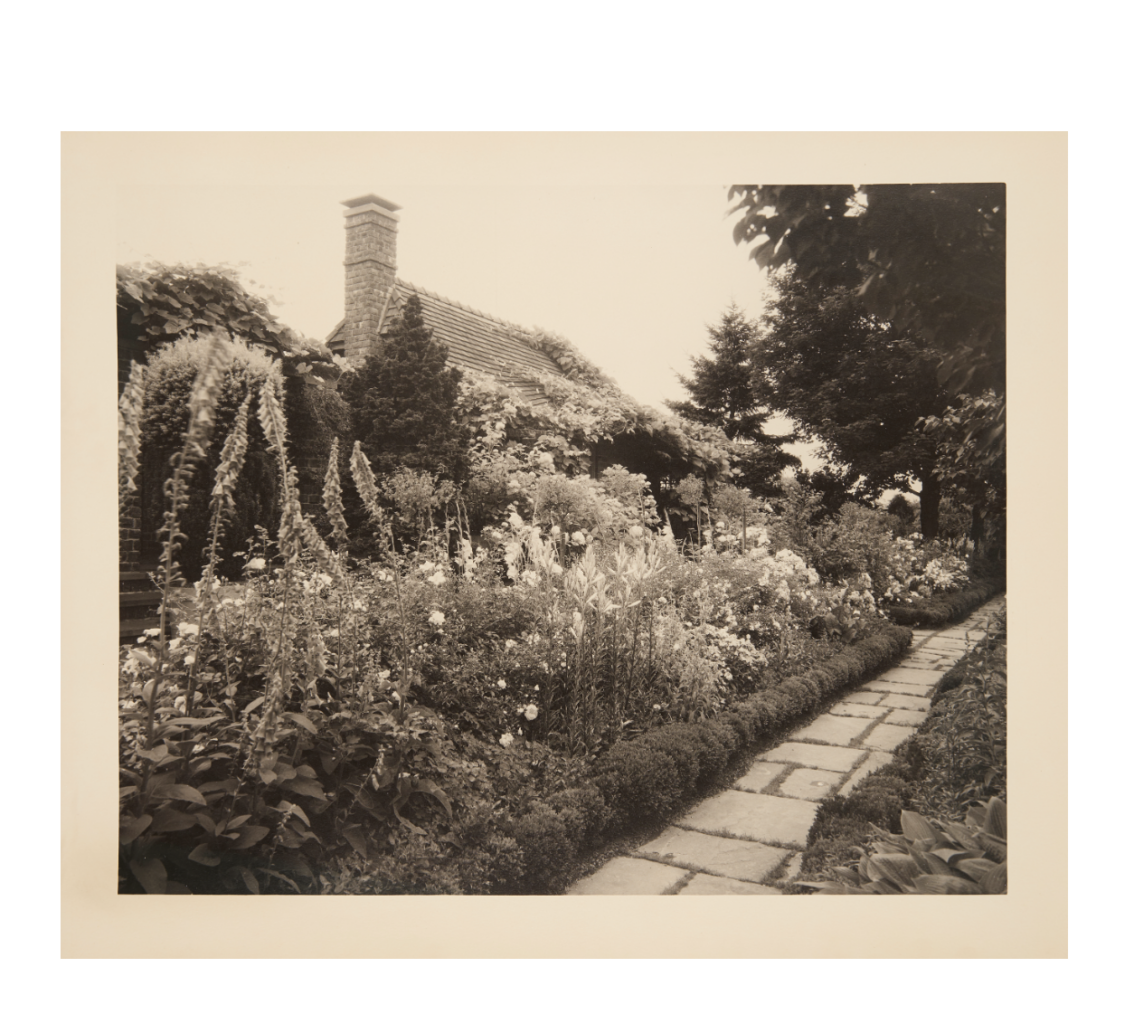This Feature is an excerpt from curator Meredith Brown’s essay in the upcoming exhibition catalogue for 2021 exhibitions at Planting Fields, Nico Muhly: Pastoral (Indoors/Outdoors) and Everett Shinn: Operatics.
*****
In its ability to capture a certain nostalgia, Nico Muhly’s two-part contemporary sound installation Pastoral (Indoors/Outdoors) extends the fantastical quality of [Everett] Shinn’s work at Planting Fields into the sonic realm. Like Shinn, Muhly draws on a variety of traditions, from Anglican choral music to American minimalism. For his compositions at Planting Fields, he looked to the site itself: the 409 acres of trails, fields, and landscaped gardens designed by the Olmsted Brothers; the birds that populated the estate inside and out; the particular Tudor revival architecture and interior decoration of Coe Hall and its surrounding buildings; and the social history and horticultural, musical, and ornithological interests of the Coe family. “I see each commission as a challenge,” Muhly has written: “write a piece of music which lasts between fifteen and twenty minutes…by this date. These are the known restrictions, the sort of predetermined constraints architects and painters work with too: you know the site on which the building will be built, or the size of the wall on which the canvas will be hung.”[1] Using the particular constraints of an early twentieth century Gold Coast estate, Muhly composed two pieces of music that together capture the layered history of the site.
In the Gallery of Coe Hall, a room built around 1920 yet designed like the great hall of an Elizabethan manor, furnished by decorator and antiques dealer Charles of London with objects spanning several centuries, Muhly’s contemporary version of a piano étude plays for a few minutes, followed by the ambient noise of a large house with many people moving through it before the piano is heard again. Beneath a large seventeenth-century portrait by John Weesop (Jan van Weesop, Flemish, d. London, 1652) of the family of William Lenthall, Speaker of the House of Commons of England, in front of massive leaded glass windows with stained glass embellishments that open onto the expansive West Lawn bordered by various species of deciduous and evergreen trees, and next to an immense stone fireplace protected with a screen by blacksmith and metal designer Samuel Yellin (American, b. Ukraine, 1884 – 1940) sits Mai Coe’s early twentieth century Steinway piano. Muhly’s Pastoral (Indoors/Outdoors) begins in this palimpsestic space at the family piano in the heart of the stately home. The music emanating from the piano is a contemporary, layered composition that performs itself as if the young Natalie Coe is practicing on her mother’s piano. As twenty-first century visitors wander the home, they hear snippets of the kind of nature-inspired music popular among young society women at the turn of the previous century. Based on the Coes’ early twentieth century architectural and decorative approximation of an ancestral home, Muhly created a contemporary composition layered with musical references from the past and present that imagines life at Planting Fields a century ago.
The various histories—of the Coes, the landscape, and the commissioned art of Shinn and Muhly—come together in a small brick building known as the Tea House at the southern end of the Italian Garden, a lush formal landscape near the estate house, complete with terraced planting beds around a central, sunken rectangular pool. A pastoral space for Mai to entertain, around 1915 the small structure was nestled between vine-covered pergolas overlooking eye-catching displays of dense perennial plantings selected by the Olmsted Brothers firm to bloom in a palette of blue, white, pink, and yellow in the Spring and Fall when Mrs. Coe was in residence and she and her guests might enjoy afternoons in and around the Tea House. Several years before she hired them to enliven her dressing room with murals, Mai Coe engaged Shinn and de Wolfe to transform this light-filled room into a trellised retreat. The interior of the space is adorned with de Wolfe’s emblematic mint colored trelliage, which sets the foundation for the fanciful suite of metal light fixtures and furniture designed by Shinn and painted with blue theatrical gold tasseled curtains and vibrant bouquets and baskets of flowers. Embedded above the blush marble mantelpiece and on the opposing wall are painted lunettes of lounging young couples (similar to those Shinn created for Mai’s Dressing Room) surrounded by brightly feathered birds and delicate flowers in the pinks, blues, and yellows of the landscape outside.
[1] Nico Muhly, “How I Write Music,” London Review of Books, vol. 40, no. 20 (October 25, 2018).

